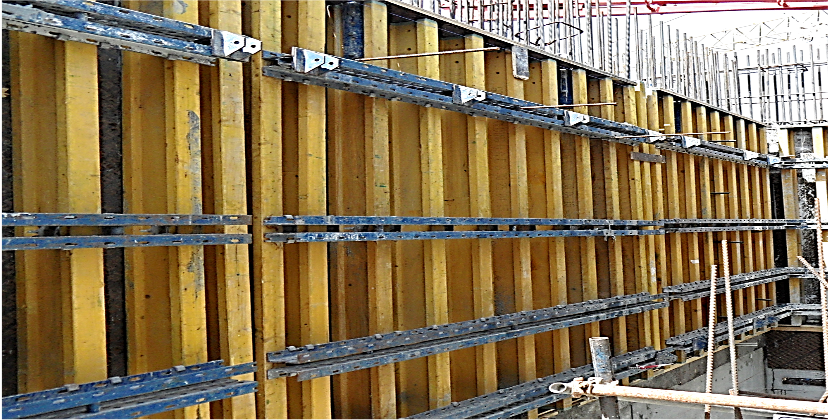Discover how modern waler construction techniques are revolutionising UK building sites and transforming structural support systems forever.
In today’s rapidly evolving construction landscape, understanding waler systems has become increasingly crucial for builders, developers, and construction professionals across the United Kingdom. With recent studies showing a 35% increase in the adoption of advanced waler systems in commercial construction projects, it’s clear that this fundamental component of formwork deserves our full attention.
Understanding Waler Systems in Modern Construction
Waler construction has evolved significantly from its humble beginnings as simple wooden supports. Today, these horizontal structural elements play a pivotal role in modern construction, particularly in concrete formwork applications. In the UK construction industry, walers serve as the backbone of formwork systems, distributing lateral pressures and ensuring structural integrity during concrete pouring and curing phases. Recent industry data indicates that properly implemented waler systems can reduce formwork failures by up to 78%, making them an indispensable element in contemporary building practices.
Essential Components and Materials
The evolution of waler construction has brought forth a diverse range of materials, each offering unique advantages for specific applications. Modern construction sites in the UK typically employ the following materials:
- Timber Walers: Traditional yet effective, offering cost-efficiency and easy customisation
- Steel Walers: Superior strength and durability, ideal for heavy-duty applications
- Aluminium Walers: Lightweight and corrosion-resistant, perfect for quick assembly
- Composite Walers: Modern alternatives combining strength with reduced weight
Material selection criteria typically considers factors such as project scale, load requirements, and environmental conditions. Industry statistics show that steel walers now dominate 65% of commercial construction projects in the UK, owing to their superior strength-to-weight ratio and longevity.
Design Principles and Load Distribution
Understanding load distribution is crucial for effective waler construction. Lateral pressure from wet concrete can exert significant forces on formwork, making proper waler spacing and design essential. Current UK building standards recommend maximum waler spacing of 600mm to 1200mm, depending on concrete pressure and formwork design. Engineers must consider:
- Concrete pour height and rate
- Formwork material strength
- Environmental factors (temperature, weather conditions)
- Project-specific requirements
Installation Best Practices
Proper installation of waler systems requires meticulous attention to detail and adherence to established procedures. The process typically involves:
- Initial layout and marking of waler positions
- Secure attachment of walers to vertical supports
- Installation of ties and brackets at specified intervals
- Final alignment and levelling checks
Research shows that 80% of formwork failures are attributed to improper installation, highlighting the importance of following correct procedures and using appropriate tools.
Safety Considerations and Compliance
In the UK, waler construction must comply with strict safety regulations and building standards. The Construction (Design and Management) Regulations 2015 outlines specific requirements for formwork safety, including waler systems. Key considerations include:
- Regular inspection and maintenance protocols
- Load capacity verification
- Emergency response procedures
- Worker training requirements
Advanced Applications and Innovations
The future of waler construction is being shaped by technological advancements and innovative approaches. Recent developments include smart sensors for load monitoring and modular waler systems that reduce installation time by up to 40%. UK construction sites are increasingly adopting these innovations to improve efficiency and safety. Notable trends include the integration of BIM technology for precise waler placement and the development of eco-friendly composite materials.
Troubleshooting and Maintenance
Effective maintenance of waler systems is crucial for their longevity and performance. Common issues that require attention include:
- Misalignment and deflection
- Wear and tear of connecting components
- Corrosion in metal walers
- Damage from improper handling
Regular maintenance can extend waler system lifespan by up to 40% and significantly reduce replacement costs.
Making the Right Choice
Selecting the appropriate waler system requires careful consideration of multiple factors. Project managers should evaluate:
- Project scope and duration
- Budget constraints
- Environmental impact
- Long-term maintenance requirements
Conclusion: Maximising Waler Efficiency
The success of any construction project heavily relies on the proper implementation of waler systems. By understanding and applying the principles outlined in this guide, construction professionals can ensure safer, more efficient, and cost-effective projects. With the UK construction industry projected to grow by 15% in the next three years, staying informed about best practices in waler construction is more important than ever. Remember to regularly consult updated building regulations and seek professional advice for specific project requirements.
FAQ
What is the problem with sheet piles?
Sheet pile wall disadvantages are: Installation of sheet piles is difficult in soils with boulders or cobbles. In such cases, the desired wall depths may not be reached. Excavation shapes are dictated by the sheet pile section and interlocking elements. Sheet pile driving may cause neighborhood disturbance.
What is a cofferdam in construction?
A cofferdam is a structure used to retain water and allow builders to dewater construction sites. It helps to maintain a dry work site when constructing structures in waterlogged areas.
What is an anchored retaining wall?
Anchored wall is a retaining or supporting structure composed of reinforced concrete elements and ground anchors ensuring structural stability, load bearing capacity, and safety. Rear side is the unexposed part of a retaining or supporting anchored wall.
What is the connection between sheet pile and waler?
Usually the waler beam is connected to the tie rods in which the waler beam behaves as continuous walling beam and the tie rods points represent the reactions of the continuous waler beam. In the present work a truss supports the waler beam in a cantilever sheet piles.
What is a wail in construction?
wailing (US wale) A horizontal timber beam, used to provide support to the side of an excavation or formwork. …
Sources
[1] https://bellingham-marine.com/understanding-walers-what-is-a-waler/
[2] https://alsyedconstruction.com/what-is-a-waler-in-construction/
[3] https://spiequip.com/formwork-waler-beams/


Leave a Reply